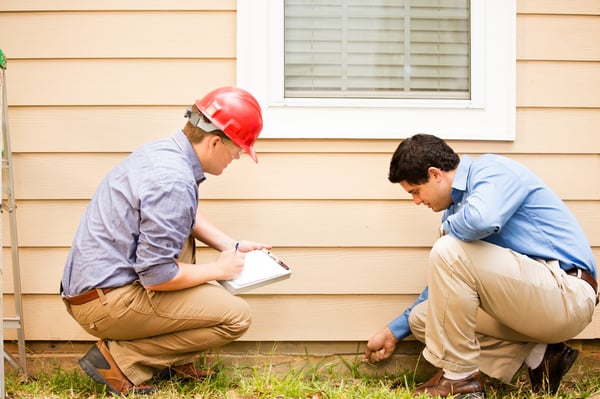Radon is an invisible gas formed in the Earth's crust. It surrounds every one of us as part of the air we breathe.
The rocks and soil beneath our homes contain traces of uranium. Over time, the uranium breaks down and forms other elements. This is called radioactive decay. Radon is one link in the decay chain of uranium.
Radon is the number one cause of lung cancer among non-smokers. If considered as a separate disease, lung cancer in people who have never smoked would rank seventh in global cancer mortality.
Approximately 21,000 people die from radon-related lung cancer every year in the United States alone.
All the while, some people still think radon poisoning is nothing but "hype," and it's nothing we need to worry about.
In the article below, we will go over ten myths about radon that have been busted by the EPA.
Want to learn where Radon comes from? Read our blog post: "Where Does Radon Come From?"
Table of Contents
- Scientists Are Unsure
- Radon Testing Is Expensive
- You Can't Fix A Radon Problem
- Radon Doesn't Effect Every Home
- Radon Only Effects Certain Parts of the Country
- If Your Neighbor Has A Radon Problem
- You Need To Test Your Water For Radon
- You Can't Sell a Home With High Radon Levels
- You Don't Need To Test
- Never Trust A Short Term Test
- Get Your Home Tested
Myth 1: Scientists Are Unsure of The Risks of Radon
Some scientists do dispute the precise number of deaths due to radon.
However, all the major health organizations (like the Centers for Disease Control and Prevention, the American Lung Association and the American Medical Association) agree with estimates that radon causes thousands of preventable lung cancer deaths every year.
This is especially true among smokers since the risk to smokers is much higher than non-smokers.

Myth 2: Radon Testing is Expensive and Difficult
The simple fact of the matter is that radon testing is easy.
It's so easy that you can test your home yourself.
Or, if you want to be sure it's done right, you can hire a qualified radon testing company.
Either approach takes only a small amount of your time and effort.
When testing, all the experts agree that long-term tests, which take readings for at least 90 days, are more accurate than short-term kits.
Myth 3: You Can't Fix a Radon Problem
There are straightforward solutions that can treat radon problems found in homes.
Thousands of homeowners have already tested and fixed the radon problems found in their homes.
Most homes can be fixed for about the same cost as other common home repairs like a plumbing or roof issue.
You can contact your state radon office for help in identifying qualified mitigation contractors (or contact Radon Eliminator today).
Myth 4: Radon Doesn't Effect Every Home
Radon can be a problem in any home.
New homes, drafty homes, insulated homes, homes with basements, and homes without basements are all at risk.
Local geology, construction materials, and how the home was built are all factors that can affect the radon levels in your home.
Myth 5: Radon Only Effects Certain Parts of the Country
High radon levels have been found in every state in the U.S.
Radon problems could be better or worse depending on where you live, but the only way to know your radon level is to test it.
Myth 6: If Your Neighbor Has A Radon Problem, So Do You
That's not necessarily true.
Radon levels can vary significantly from state to state, town to town, and even home to home.
Again, the only way to know if your home has a radon problem is to test it.
Myth 7: You Need To Test Your Water For Radon
Radon gas can get into some homes through their water supply, but it is essential to first test the air in the house for radon.
If your water comes from a public water supply that uses groundwater, call your water supplier.
If high radon levels are found in the air, and your home has a private well, call the Safe Drinking Water Hotline at (800) 426-4791 to find out how to test your water.

Myth 8: You Can't Sell a Home With High Radon Levels
As long as radon problems have been fixed, the sale of your home should not be blocked or delayed.
The added protection is actually a good selling point.
Myth 9: If You've Lived In Your House For A While, You Don't Need To Test
You will reduce your risk of lung cancer when you reduce radon levels, no matter how long you've lived with an elevated radon level.
Myth 10: Never Trust A Short Term Test
While long-term testing is preferred, short-term tests can be used to decide whether to reduce a home's high radon levels.
However, the closer the short-term testing result is to 4 pCi/L, the less certainty there is about whether the home's year-round average is above or below that level.
Radon levels can change by the day, so the longer the test, the better idea you will have of your actual radon levels.
However, don't completely disregard your short-term test.
Also, keep in mind that radon levels below 4 pCi/L still pose some risk and that radon levels can be reduced to 2 pCi/L or below in most homes.
Get Your Home Tested
Those are a few of the most famous radon myths debunked by the EPA.
Radon poisoning is a grave issue, and most people usually find out they have radon poisoning only after they've been diagnosed with lung cancer.
If you'd like the peace of mind that comes with a radon test, give the team at Radon Eliminator a call.
They can do a professional radon test, and, if necessary, work with you to lower the radon levels in your home.
Click the button below to get started.





